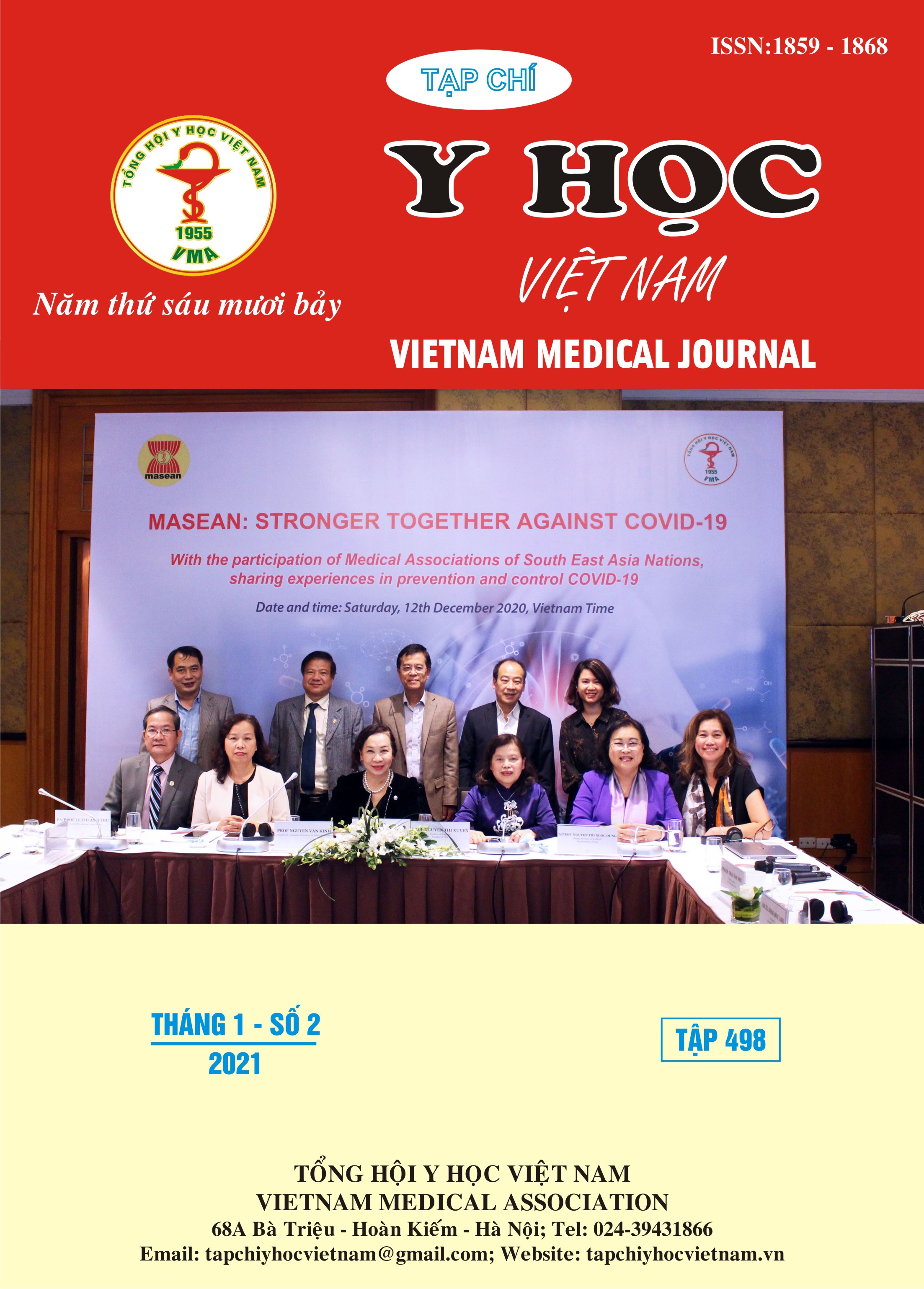BƯỚC ĐẦU ĐÁNH GIÁ KẾT QUẢ PHẪU THUẬT THAY LẠI KHỚP HÁNG TOÀN PHẦN TẠI BỆNH VIỆN THỐNG NHẤT
Nội dung chính của bài viết
Tóm tắt
Mục tiêu: bước đầu đánh giá kết quả phẫu thuật thay lại khớp háng tại Bệnh viện Thống Nhất. Đối tượng và phương pháp nghiên cứu: nghiên cứu tiến cứu mô tả 30 bệnh nhân (BN) thay lại khớp háng tại Bệnh viện Thống Nhất từ 6/2015 đến tháng 6/2019. Các BN sau mổ được theo dõi triệu chứng lâm sàng và X-quang trong 3 năm để đánh giá các biến chứng, điểm chức năng Harris và mức độ hài lòng. Kết quả: tuổi trung bình là 53 (từ 36 đến 65 tuổi). Giới nam chiếm ưu thế 63,3%. BMI trung bình là 23,5. Thời gian giữa 2 lần thay khớp trung bình 15 năm. Nguyên nhân thay lại khớp háng chủ yếu là nhiễm trùng chiếm 43,3%. Khớp háng loại không xi măng chiếm 86,7%, 73,3% chuôi phủ HA, 76,7% là loại ceramic (trong đó 40% là ceramic/ ceramic), 43,3% kích thước cổ chuôi >32mm. Vị trí đặt ổ chảo khi thay khớp lần đầu dao động chủ yếu xung quanh trị số ngả trước 18° và nghiêng 41°. Biến chứng sau thay lại khớp háng chiếm 40%, chủ yếu là gãy quanh dụng cụ chiếm 16,7%. Thời gian nằm viện trung bình 10 ngày. Đa phần các BN có cải thiện điểm đau, chỉ có 2 BN đau từ trung bình đến nặng. Điểm Harris từ tốt đến xuất sắc chiếm 71%, trung bình 17%, tệ 12%. Kết luận: mất vững khớp háng và lỏng cơ học là những chỉ định phổ biến nhất cho phẫu thuật thay lại khớp háng. Việc phẫu thuật thay lại khớp háng đặt ra khi khớp háng cũ đã không còn đảm bảo chức năng và giúp cho BN cải thiện được chất lượng vận động khớp háng và cuộc sống.
Chi tiết bài viết
Từ khóa
thay lại, thay khớp háng nhân tạo toàn phần
Tài liệu tham khảo
2. Risk Factors for Early Revision after Total Hip Arthroplasty. Christopher J. Dy, Kevin J. Bozic, Ting Jung Pan, Timothy M. Wright, Douglas E. Padgett, Stephen Lyman. New York: Arthritis Care Res (Hoboken), 2014 Jun, Vol. 66(6), pp. 907–915. 24285406.
3. Total hip arthroplasty: Survival and modes of failure. Theofilos Karachalios, George Komnos, and Antonios Koutalos. Greece: EFORT Open Rev, 2018 May, Vol. 3(5), pp. 232–239. 29951261.
4. The risk of revision after total hip arthroplasty in young patients depends on surgical approach, femoral head size and bearing type; an analysis of 19,682 operations in the Dutch arthroplasty register. M. F. L. Kuijpers, G. Hannink, S. B. W. Vehmeijer, L. N. van Steenbergen, B. W. Schreurs. 20: 385, Nijmegen, The Netherlands: BMC Musculoskelet Disord, 2019 Aug. 31438921.
5. Why Revision Total Hip Arthroplasty Fails. Bryan D. Springer, Thomas K. Fehring, William L. Griffin, Susan M. Odum, John L. Masonis. Charlotte, NC USA: Clin Orthop Relat Res, 2009 Jan, Vol. 467(1), pp. 166–173. 18975043.
6. Body mass index is associated with risk of reoperation and revision after primary total hip arthroplasty: a study of the Swedish Hip Arthroplasty Register including 83,146 patients. Arkan S Sayed-Noor, Sebastian Mukka, Maziar Mohaddes, Johan Kärrholm, Ola Rolfson. Sweden: Acta Orthop, 2019 Jun, Vol. 90(3), pp. 220–225. 30931664.
7. Population-Based Rates of Revision of Primary Total Hip Arthroplasty: A Systematic Review. Kelly L. Corbett, Elena Losina, Akosua A. Nti, Julian J. Z. Prokopetz, Jeffrey N. Katz. Massachusetts, USA: PLoS One, 2010 Oct, Vol. 5(10), p. e13520. 20976011.
8. What Is the Risk of Revision Surgery in Hydroxyapatite-coated Femoral Hip Stems?
Findings From a Large National Registry. Maria C Inacio, Michelle Lorimer, David C Davidson, Richard N De Steiger, Peter L Lewis, Stephen E Graves. s.l: Clin Orthop Relat Res, 2018 Dec, Vol. 476(12), pp. 2353-2366. 30303878.
9. The Effect of Size for a Hydroxyapatite-Coated Cementless Implant on Component Revision in Total Hip Arthroplasty: An Analysis of 41,265 Stems. Wayne T Hoskins, Roger J Bingham, Michelle Lorimer, Richard N de Steiger. s.l: J Arthroplasty, 2020 Apr, Vol. 35(4), pp. 1074-1078. 31787355.


